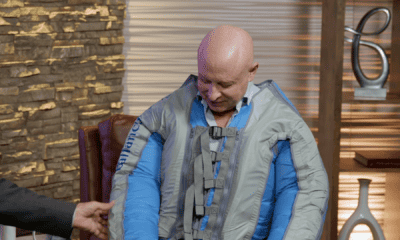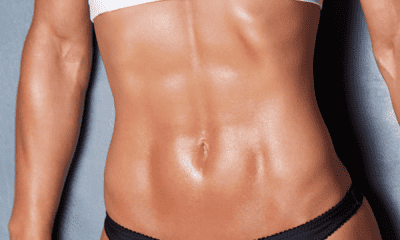Interestingly enough, the second most performed plastic surgery procedure is also one the public, and even patients, are most naive about: liposuction. Not only is it one of the most performed procedures (over 300,000 in the US in 2017), but even people who know nothing about plastic surgery know one thing: liposuction means removing fat. The problem is “removing fat” sounds extremely straight forward and simple, but there’s much more to the story.
Liposuction is sought out because it is effective. In fact, it’s one of the most successful procedures in plastic surgery, due to the relative “simplicity” of the procedure and how effective new tools are at accomplishing it. Still, liposuction is only so great when used in the proper circumstances, on the proper fat. Board certified plastic surgeons Dr. Dustin Reid and Dr. Ashley Gordon of Austin discuss with board certified plastic surgeon Dr. Adam Hamawy, shedding light onto the different kinds of fat surgeons face and how they use liposuction properly to sort it out.
All Fat is Not the Same
For starters, all fat is not the same. “Definitely there are different types of fat,” begins Dr. Reid. “It’s different between people, between areas of the body, between the genders. When I see male patients, I talk about their fat being a little more grisly and fibrous – it can be more of a challenge to remove. At the same time, I think that the results are sometimes better because of the nature of the fat. With women, the fat can sometimes be softer and easier to remove, but sometimes it can be a setup for more contour irregularities.”
Dr. Reid notes that even between genders, fat can behave differently. And while liposuction seems to be as simple as put in a vaccum tube and suck that fat right out, surgeons have to be conscious of the differences to make great results. As in Dr. Reid’s example, contour is the ultimate goal of any fat removal procedure, and the type of fat involved will play a part in final contour.
Let’s say you have a pillow with stuffing that makes it firm. If you wanted to take out a bit, and you removed it all from the center, maybe the pillow is now going to be irregularly contoured because that thick stuffing didn’t fill in the recently vacated space. In order to get a successful result, you would need to first remove the stuffing, then shift the remaining stuffing around to fill in the space and smooth out the contour. This is very similar to liposuction, and is why it’s important for surgeons to know everything they can about the type of fat involved to perform the best contouring.
The Liposuction Consultation is Critical
In order to properly perform liposuction, great body contouring surgeons will do a deep assessment of patients prior to surgery. “The exam is very important,” shares Dr. Hamawy, a board certified plastic surgeon in New Jersey. “You’ve got to look at them, you’ve got to feel them, you’ve got to pinch and get your hands in there! If you can’t pinch it, that’s a problem.”
Surgeons will feel, prod, and pinch to discover the “type” of fat they’re dealing with and how to properly utilize their liposuction hardware. Sometimes, the results of this exam may show that liposuction is not the right answer. “That’s when we’re talking about that deep fat, or visceral fat, that you can’t get to,” details Hamawy. “If that’s the case, liposuction and our devices aren’t going to work as well.”
Hard to Reach Fat – Visceral Fat
In general, there are two types of fat that patients should consider: subcutaneous and visceral. Subcutaneous fat is the fat most people are familiar with: the fat that you can pinch that sits just underneath the skin, usually in the abdomen, thighs, and hip region. On the other hand (or on the other side of the muscle), is visceral fat, fat that exists behind the muscles in the body cavity around organs. Subcutaneous fat is the kind liposuction targets, removes, and recontours, whereas visceral fat cannot be removed surgically.
This is one of the misunderstandings patients may have about liposuction. A man with a huge “beer belly” is probably suffering from a large amount of visceral fat, unreachable by liposuction behind the muscles. Even if there’s only a little, liposuction is useless in this case.
Ideal Candidates for Liposuction
Surprisingly, the best candidates for liposuction don’t have a lot of fat on their frames. They may not even be categorized as overweight! The reason they are the best candidates is because liposuction actually doesn’t remove all that much. A standard liposuction procedure may only pull something like 1-2 pounds of fat, a shocking revelation to many unfamiliar. Thus, those with smaller amounts of fat gain the most, as excess can be removed and the remainder internally contoured across the muscles to make a better exterior contour.
Even something as simple as “removing fat” is a complex arrangement of variables, an equation heavily experienced plastic surgeons will be able to solve. When it comes to body contouring and perfecting the hard work of diet and exercise, liposuction remains the gold standard.



















Facebook
Twitter
Instagram
YouTube
RSS